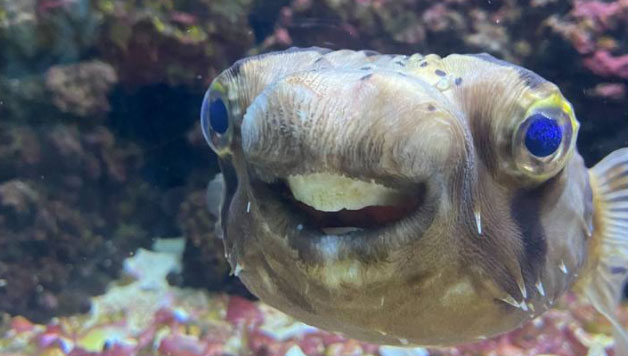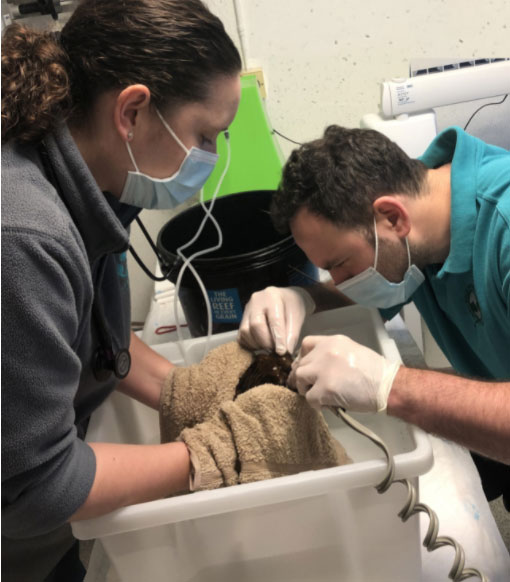Dentists had to perform emergency surgery on a fish with oversized teeth that could not eat in a rare case in the UK.
Mark Byatt, 64, was worried because his family’s pet fish could not eat due to its excessively large teeth. The fish showed signs of weight loss, but initially, Mark Byatt could not determine the cause.

The fish could not eat due to oversized teeth.
He stated: “About three months ago, we noticed that its front jaw was growing very quickly even though it ate shellfish every day. I wasn’t sure why Goldie’s teeth never seemed to wear down naturally. Thinking that it would be difficult to fix, I was very worried.”
Mark Byatt had to take the fish for emergency treatment at a veterinary center in Snodland, Kent, UK. There, the veterinarians had to perform emergency surgery to correct its oversized teeth.
First, the veterinarian placed the fish in a bowl of water containing a safe anesthetic solution approved for use until the fish was lightly anesthetized before the procedure. Daniel Calvo Carrasco, the veterinarian who performed the surgery, explained that they had to trim the fish’s teeth by about 1 cm.
Daniel Calvo Carrasco said: “The teeth of the porcupine pufferfish grow continuously throughout their lives, similar to a beak. Normally, fish’s teeth will naturally shorten due to wear from a diet of hard-shelled food. However, this fish grew unusually, with its teeth growing so quickly that it hindered its ability to eat, which was the reason for its weight loss.”

The veterinarians placed the fish in a second large tank of water to help it recover from anesthesia.
The surgery went quite smoothly as the veterinarians used the best supportive equipment. The fish was able to breathe for a short time in the air environment. Debbie Addison, a staff member directly involved in the surgery, used a damp cloth to prevent Goldie from drying out, activating a protective mechanism that caused its body to swell to twice its normal size. After the tooth trimming procedure, the veterinarians placed the fish in a second large tank of water to help it recover from anesthesia.
“The recovery process went quite well. Within 5 minutes, it was able to move gently in the water, and after about 10 minutes, the fish was happily swimming again. The entire process went smoothly and lasted less than an hour. The owner took it home, and it was eating normally after 2 hours,” Debbie Addison said.


















































